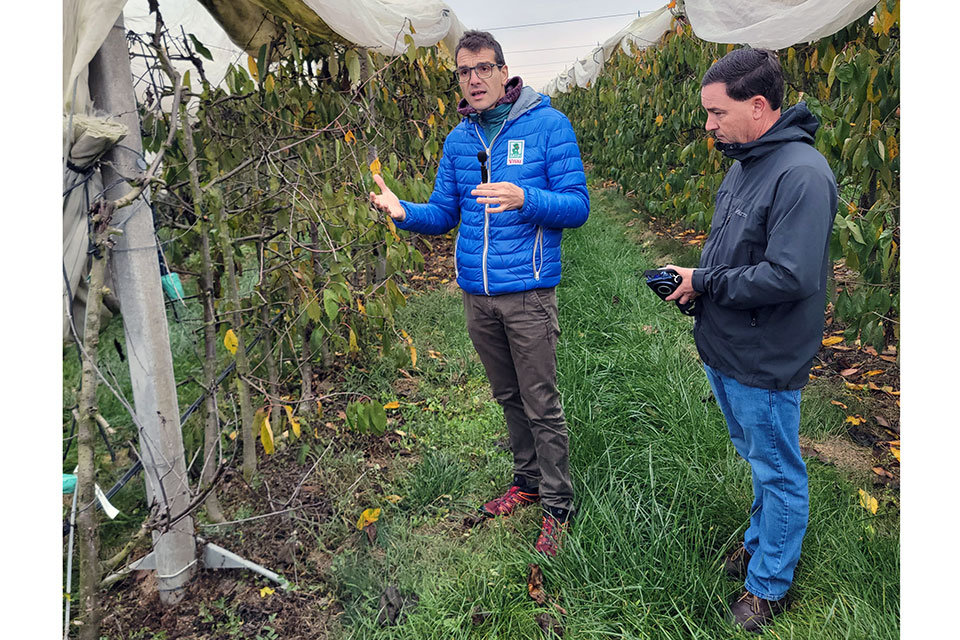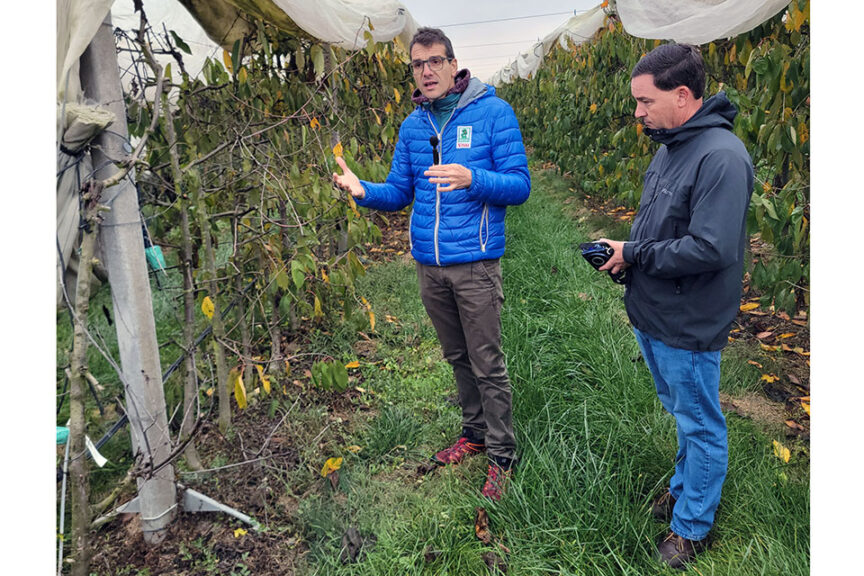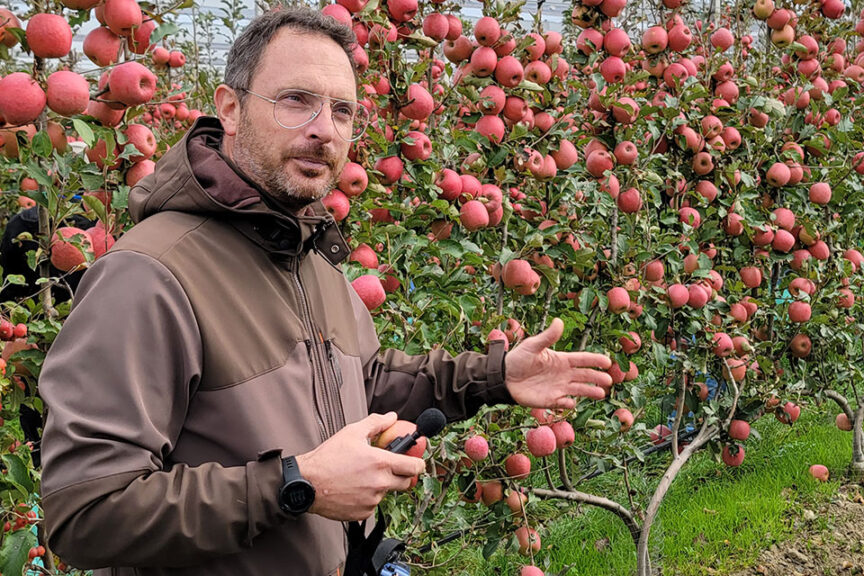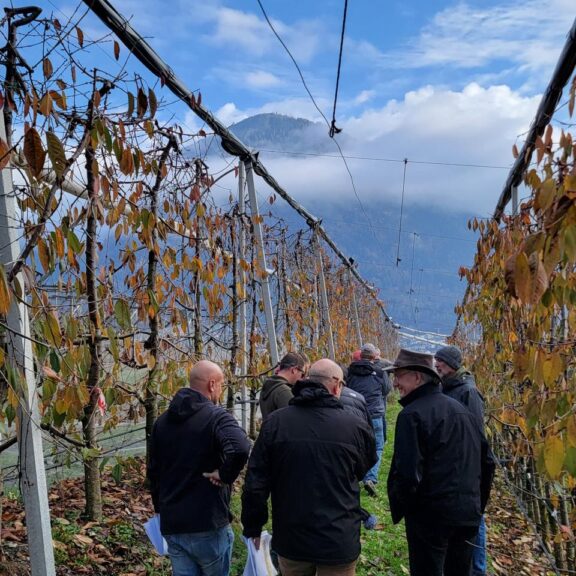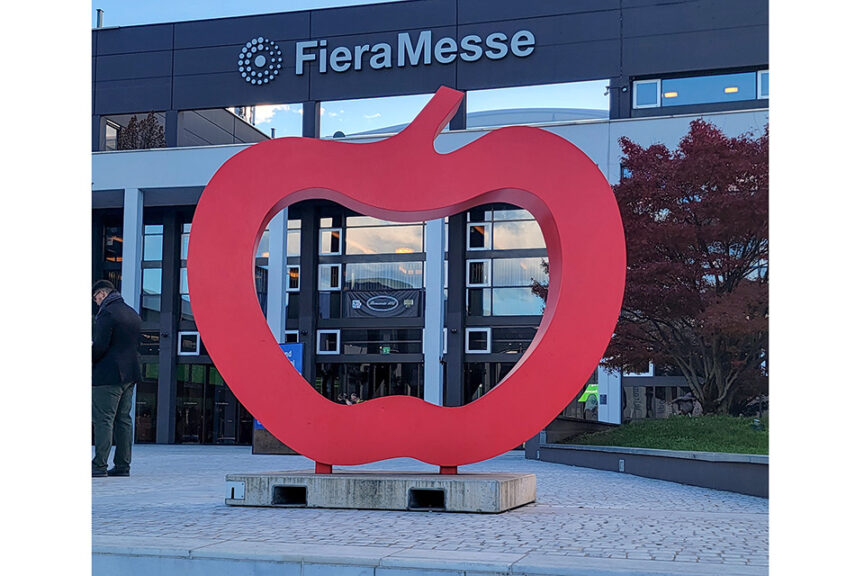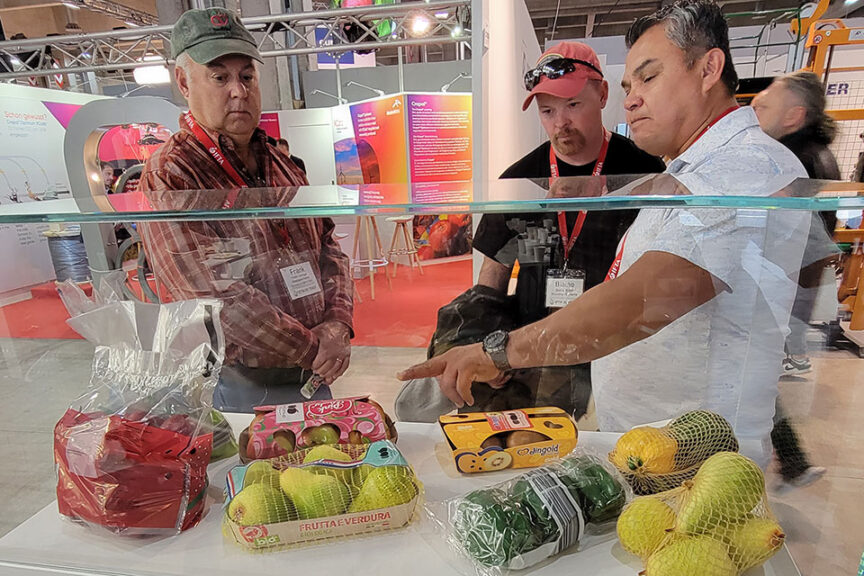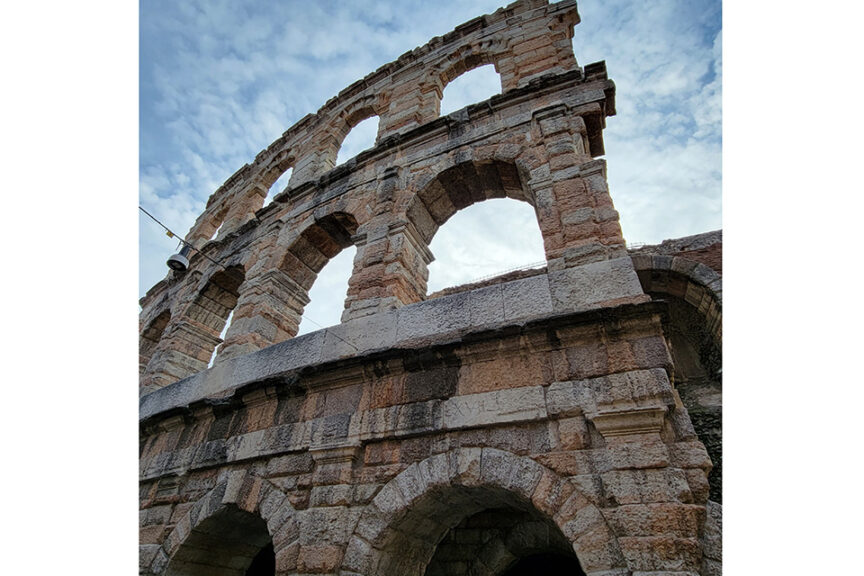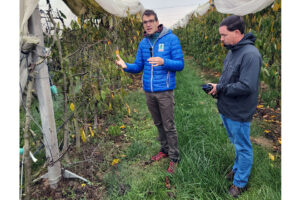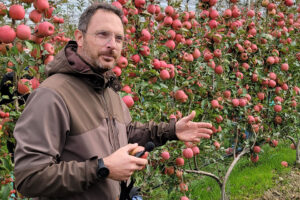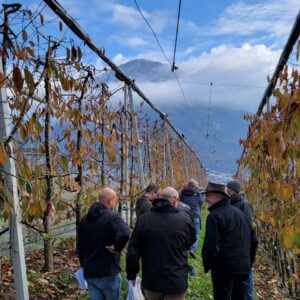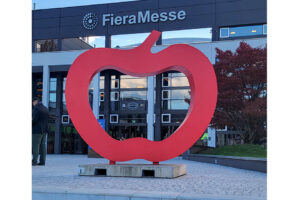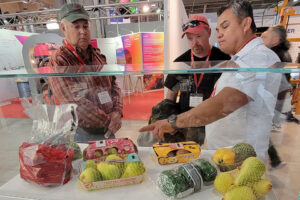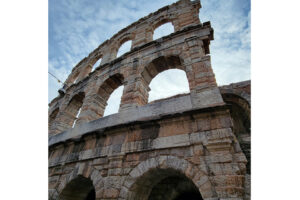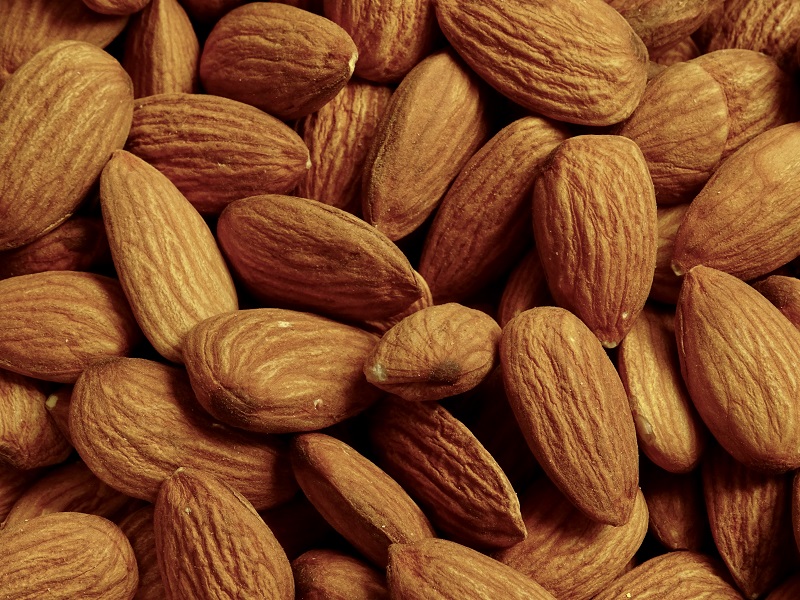My Eye-Opening Experience Walking Through a Farm Trade Show in Italy
Attending agricultural trade shows comes with the territory for those of us who write about and photograph crop production. I’ve attended dozens through the years, but until the International Fruit Tree Association’s recent tour of Northern Italy, I had never been accompanied by growers.
Sure, I’d often see grower-friends at shows, and would spend some time with them visiting the various exhibits. But usually not for long, as they would often stop for long conversations, and with time being limited, I would go off and search for the latest and greatest thing.
The strategy made perfect sense, and still does. After all, most people — growers included — want to know what’s new. Especially if it’s a product that is truly new, distinctive, and can help make or save money.
But in Italy, I was fortunate to spend an entire day in the company of growers at Interpoma, the only trade show in the world devoted to apples. You might think that with such a name, pears would get some attention as well, but the event’s organizers don’t even mention the fruit in their show description. Pear production has declined in Italy, and few are being planted there these days as growers struggle to make a profit.
I joined Blaine Smith, an apple grower and self-described “pear guy” from Washington — pear growers have a certain admirable pride — and Frank Gieringer, a grower of mainly apples and berries from Kansas. Making it more interesting was the fact that Smith grows for wholesale, while Gieringer sells nearly all his fruit at his own farm market just outside Kansas City. Even better, we were joined by Ramiro Avilez from Van Well Nursery of Washington, who deals primarily with the growers in his home state.
“We have growers and a nurseryman,” Smith remarked, “all we need now is a warehouse guy.” It would have rounded out the perspective, especially when it came to the presorting, packaging, and processing equipment.
What I found most interesting is that while all three men were certainly interested in what was new and different, the stuff I have always sought out at agricultural trade shows, what was most important to them was what they could actually use.
Netting, for example, netting that stays up and doesn’t rip. Or the concrete posts that holds up that netting.
Not that they weren’t interested in what was new. A yellow-skinned apple with red flesh called ‘Lucy-Glo’ got Smith’s attention. He actually thought it would be a better fit for Gieringer to sell direct-market, because cutting it up in front of consumers at a farmers’ market would attract a crowd. That may be, Gieringer said, though food safety regulations prevented him from doing so. He’d have to bring it pre-cut, which definitely takes the spectacle away.
Anything and everything that might reduce their need to hire more laborers was of keen interest, no matter how mundane it first appeared. For example, a simple string thinner took on new meaning when Smith explained that hand-thinning his ‘Rainier’ cherries can cost $1,000 an acre.
But what may have struck me most of all was that when they talked to an exhibitor, they wanted every single one of their questions answered to their satisfaction. Forget the shiny, expensive new toy, they might be interested in the dull, reasonably priced old one, as long as it benefited their bottom line. Practical people, growers.
Scroll through the photo slideshow near the top to see some of the sights and scenes I captured while on tour in Italy.




